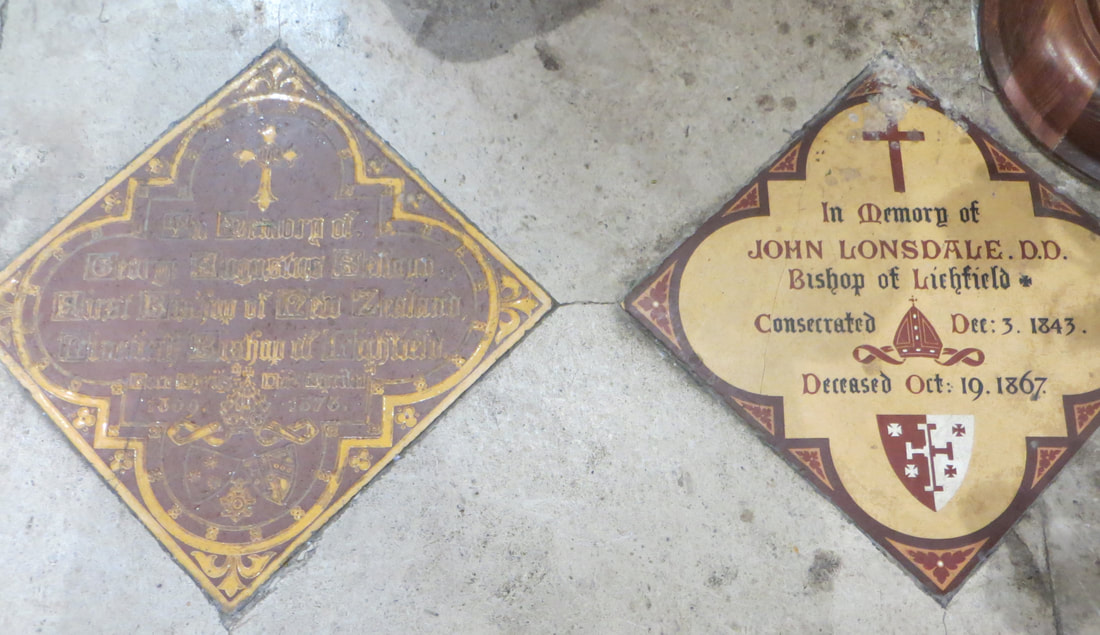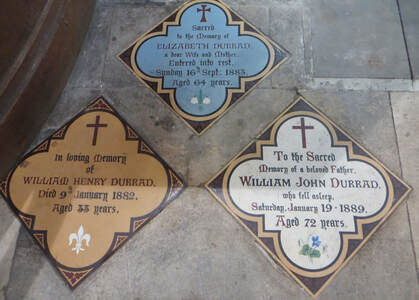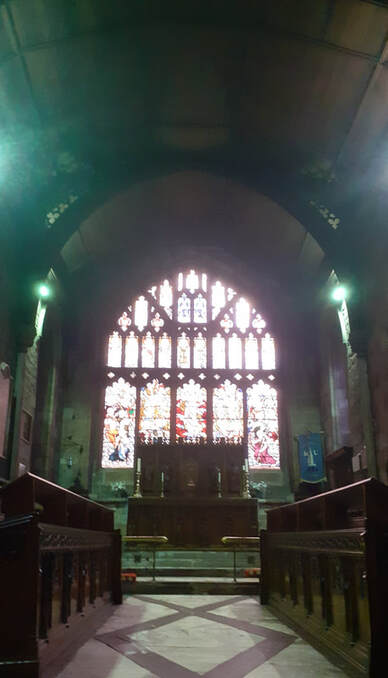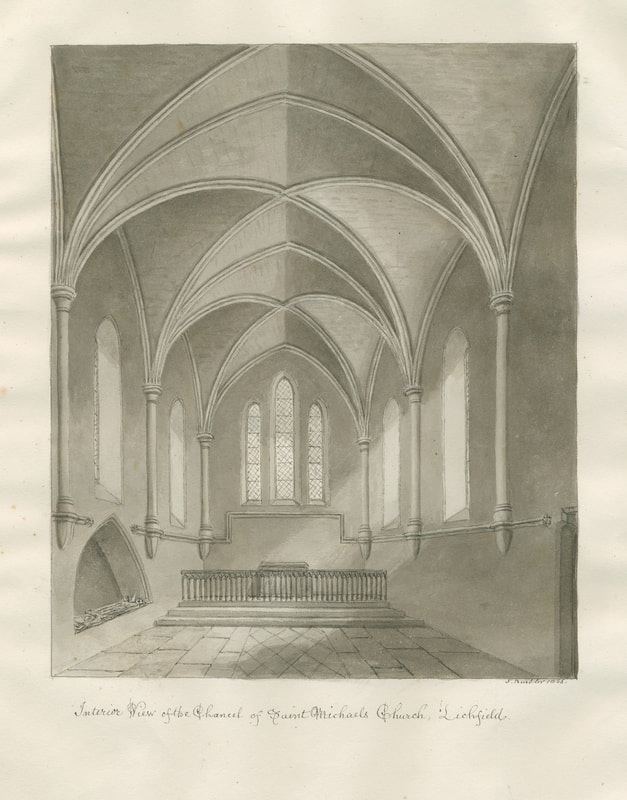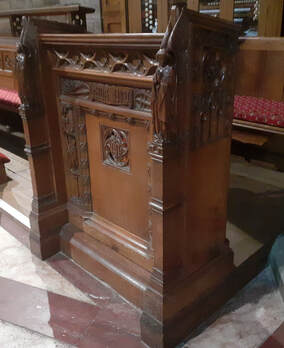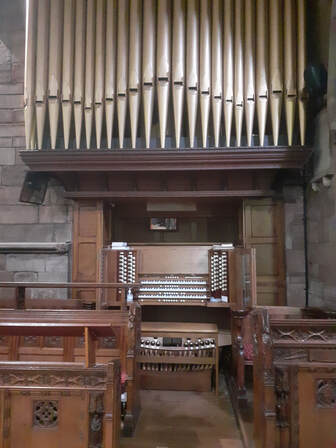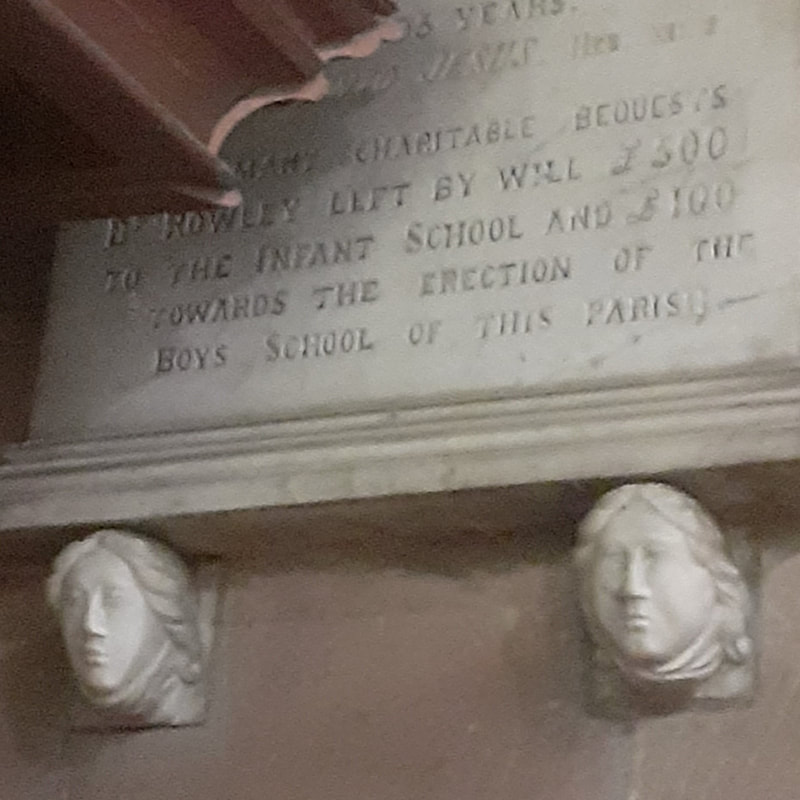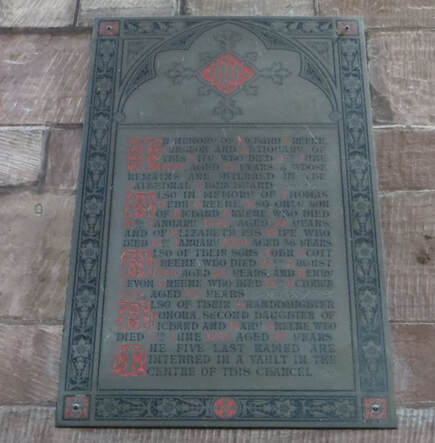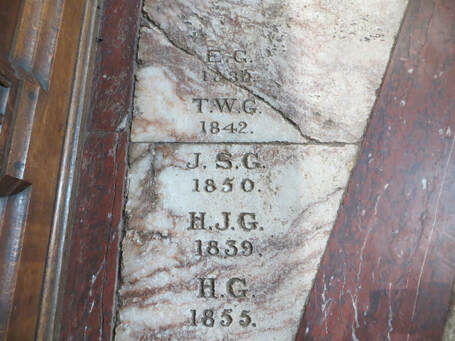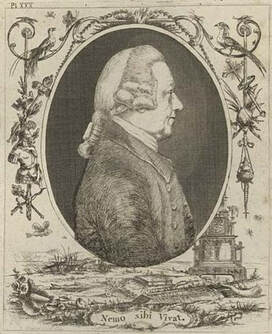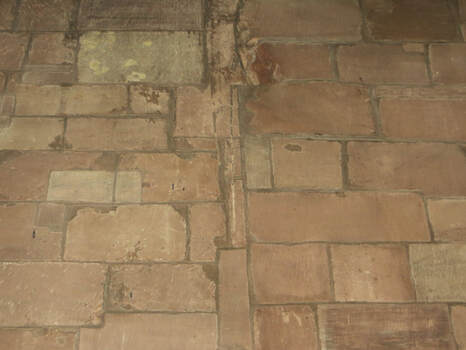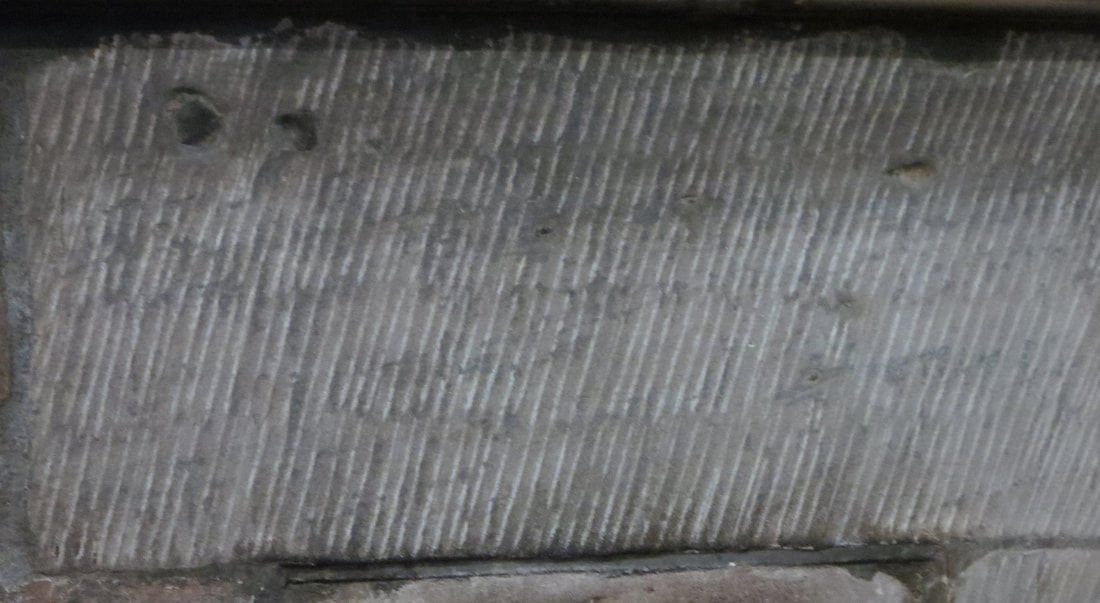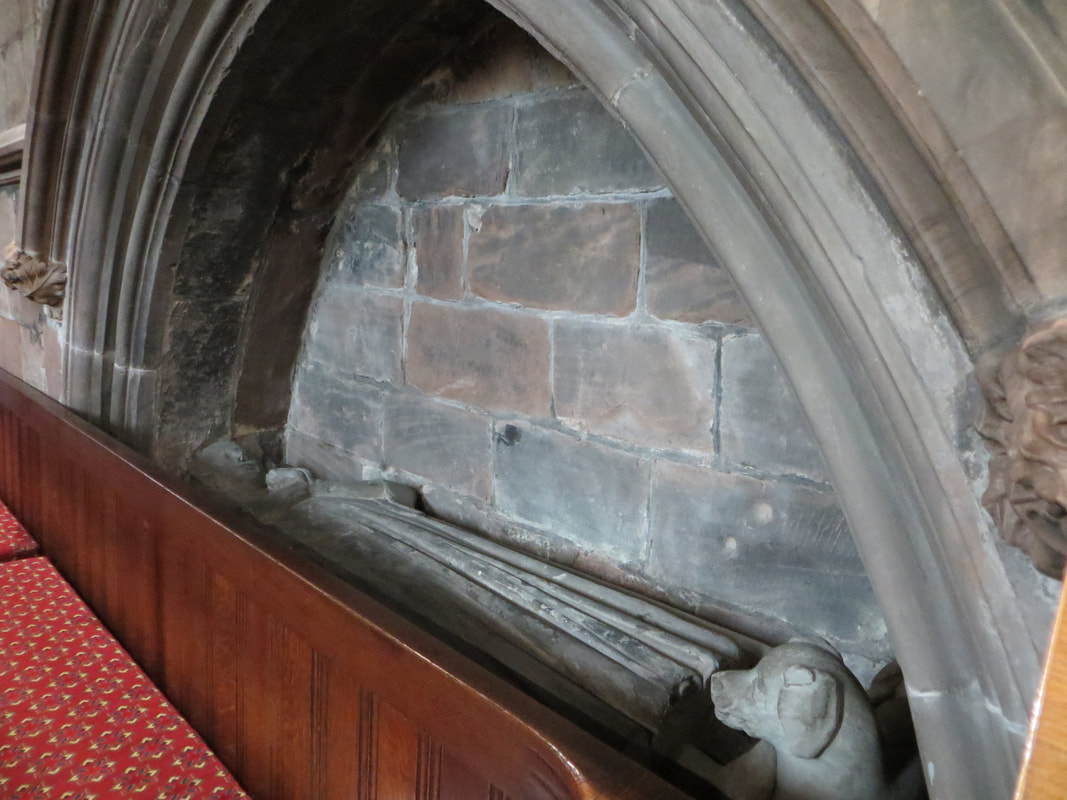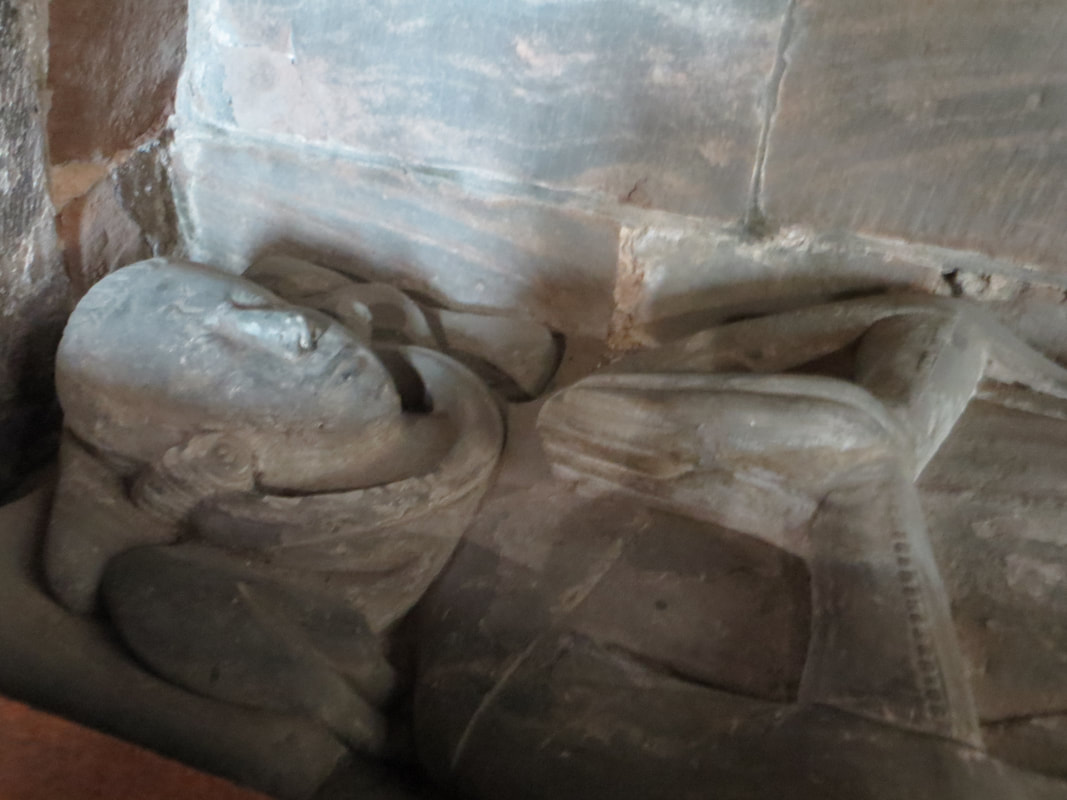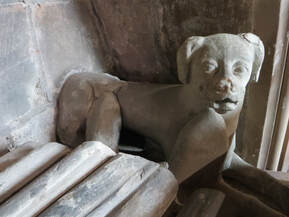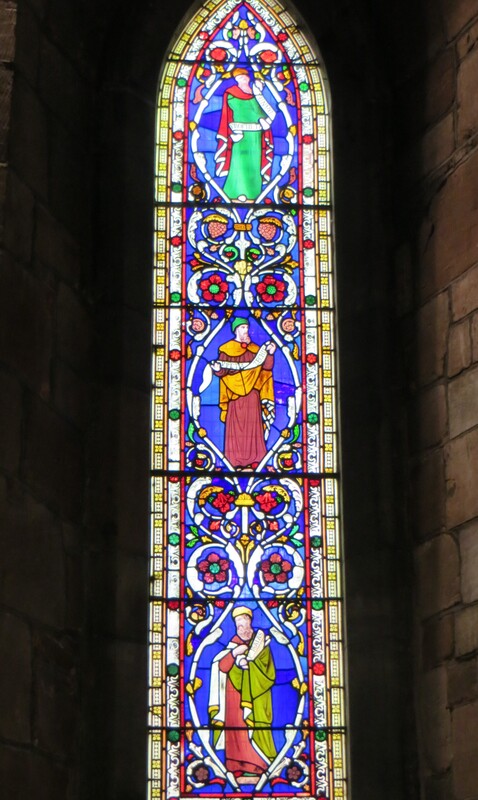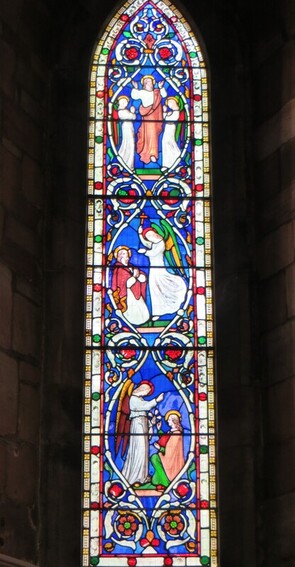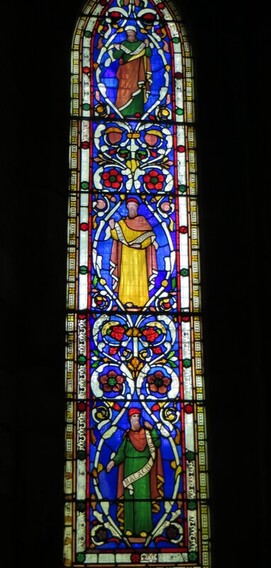A VIRTUAL TOUR OF ST. MICHAEL'S CHURCH
The third station - the chancel
The next station begins at the entrance to the chancel. Just before the chancel step on the left are two floor tile memorials to two Bishops of Lichfield - Bishops Londsdale and Selwyn. To the right, just by the pulpit, there are three very similar memorial tiles to the Durrad family . William Durrad was the Lichfield’s first station master at the original Trent Valley Station and he was churchwarden in the 1850s. One cannot help but suspect that these tiles were placed in direct imitation of those of the Bishops on the other side of the chancel arch and were an indication of the perceived status of the family.
As mentioned at Station 2, the restoration work of the 1840s mainly concerned the chancel area. It was lowered to its present height and the walls plastered and the windows rebuilt to the required lancet form, and the east window converted into three narrow lancet windows. An ornate ceiling was constructed beneath the roof. These changes can be seen in a drawing from the William Salt library. All in all, these changes amounted to large scale ecclesiastical vandalism, and most of these were wisely undone in the late nineteenth century. But much that was original was unfortunately destroyed and lost.
As we enter the chancel we can see the carved wooden clergy and choir stalls, again well provided with angels. The modern electric organ is on the right, the site of a number of other instruments since the nineteenth century. Before that there was a small organ on the gallery at the west end mentioned above. The organ pipes above the organ and on the east wall of the nave are all that is left of the earlier instruments and are purely decorative. On the end wall of the chancel, partially obscured by the organ is the 1863 monument to Dr. Thomas Rowley and his wife Fanny, listing his charitable bequests to the Infant's School and for the establishment of the Boy's school.
On the north wall of the chancel we find the memorial of Richard Greene, Surgeon and Antiquary (d 1793) who is buried in the Cathedral, and his family, many of who who died in the 1830s and 1840s were interred in a later tomb in the centre of the Chancel. One of his grandsons, another Richard, banker, magistrate and churchwarden, was largely responsible for the 1840s restoration of the chancel and seems to have taken the opportunity to install a family vault in the process.
On the north side of the chancel there is an obvious break in the stonework at the point where the original chancel ended. On the organ side there are numerous stones that seem to have been deliberately scoured. In the right light it is possible to glimpse vague indications of text below the scouring (at least if you have a good imagination). Perhaps we have here an indication of deliberate defacement of memorials during the turbulent periods of the Reformation and the Civil War. Alternatively it might just represent the scouring of walls to receive plaster during the reconstruction of the 1840s.
Halfway down the chancel on the north side, we can also see here an effigy dressed as a medieval lawyer that was found in the nineteenth century restoration, together with his dog at his feet. This is usually taken to be William de Walton, who left the church money for masses to pray for his family in 1344. However, in reality there is no certainty that he is the one represented here.
The lancet windows on the north side remain from the restoration of the 1840s, replacing much wider windows. The two outer windows illustrate Old Testament prophets, whilst the central window again concentrates on angels - the angel Gabriel appearing to Mary to announce the birth of Jesus, the angel who appeared to Jesus when he was praying in the Garden of Gethsemane just before his arrest and execution and the angels who appeared with Jesus at his ascension to heaven.

